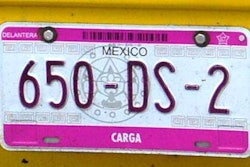Greasing
Your cost: $10
Shop cost: $45-$85
Time: 3⁄4 hour
Greasing is simple and inexpensive. You can purchase a high-quality, lever-action grease gun, grease and wipes for less than $50. While air-powered guns make the job go faster, maintenance experts actually prefer the gentler job a hand-operated gun will do. Forcing grease into fittings too fast can overstress some grease seals.
Bill Litosky, service manager at Bergey’s Mack and Volvo in Franconia, Pa., recommends greasing at least once between engine oil and filter changes, as well as along with the oil change, if you are running an oil change interval of 25,000 to 30,000 miles.
Owner-operator Earl Evans of Ohio has found that frequent greasing means his Kenworth tractor “drives like it was new at 600,000 miles.” He says he has never replaced any chassis component that has a grease fitting. He jacks the truck up and greases everything as often as every 2,500 to 3,000 miles, especially when he’s been running on unusually rough roads.
Getting a tractor and trailer greased, combined with a check of fluid levels and tire pressures at a shop, costs $45 to $85. Doing it yourself might allow you to grease more often and ultimately avert some repairs.
Changing oil and filters
Your cost: $120
Shop cost: $190
Time: 1 hour
The Overdrive Owner-Operator Market Behavior Report shows more owner-operators purchase their engine oil at oil company distributors than anywhere else. You can buy oil in 55-gallon drums, which makes it at least 10 to 15 percent cheaper per gallon than buying gallon containers.
You’ll need a hand-cranked pump to remove the oil from the drum ($50 to $75) and a 60-quart catch-pan to grab the used oil (less than $50). You can avoid paying for disposal if you have a shop – or know of one – that uses a motor oil-fired heater.
Replacing belts and hoses
Your cost: $150
Shop cost: $300-$340
Time: 2 hours
Replacing V-belts and hoses is a simple job that most owner-operators do themselves. You’ll need a good set of socket wrenches and, for belts with an automatic tensioner, a socket drive with a long handle. An adequate set can be purchased for $300 to $400.
Doing hoses requires a clean catch pan for coolant, and a basic set of screwdrivers and small sockets. You should also ideally have an inch-pound torque wrench, as proper tension on the attaching clamp is critical.
Getting several belts replaced at a shop will take from less than an hour to one and a half hours and cost $65 to $150 labor.
Changing fuel filters
Your cost: $15
Shop cost: $25-$30
Time: 1⁄2 hour
This doesn’t require many tools, but learning the proper technique is important. Jim Hess of Midway Truck Service has seen owner-operators run into trouble from not doing it right and have to call for road service. You’ll need a band clamp of appropriate diameter for fuel filters, a catch pan and a small container of clean fuel. The key is getting all the air out of the system by priming the filter housing to the brim with clean fuel.
Idle the truck briefly to fully prime the system, and then shut it off. Fill the new primary filter to the top with clean fuel, making sure to lube the gasket as the filter maker recommends. Remove the old primary filter and immediately install the new one.
Idle the truck until it runs smoothly, an indicator that all air has been expelled from the system, then shut it off. Repeat the entire process for the secondary filter.
Some large filter/separators with plexiglass housings allow you to drain the housing, replace the filter and then remove a cap for full priming with fresh fuel prior to starting the truck.
Some engines, like later Cummins ISX models, include a priming pump. All you need to do is open a bleed port and run the pump until fresh fuel comes out. Consult your engine manual for instructions.
Cleaning connections and cables
Your cost: $10
Shop cost: $80 – $100
Time: 1 hour
Litosky says one simple task is cleaning connections and inspecting and replacing battery cables and ground straps. Special battery terminal cleaners are inexpensive, and other connections can be cleaned with sandpaper or steel wool. The engine ECM has its own voltage supply, and checking that wiring staves off many problems. Make sure to disconnect battery connections prior to doing electrical work.
Inspecting cooling system
Your cost: $2.50
Shop cost: $20
Time: 1⁄4 hour
To check your system, buy test strips and measure antifreeze concentration and the level of anti-corrosion additives. Adding SCAs (supplemental coolant additives) when necessary or using extended life antifreeze cost little and will prevent expensive engine repairs such as redoing cylinder kits because of liner pitting from corrosion.









